Ethiopian Culture
Ethiopia is truly a Land of discovery – brilliant and beautiful, secretive, mysterious and extraordinary. Above all things, it is a country of great antiquity, with a culture and traditions dating back more than 3,000 years. The traveler in Ethiopia makes a journey through time, transported by beautiful monuments and the ruins of edifices built long centuries ago.
Ethiopia, like many other African countries, is a multi-ethnic state. Many distinctions have been blurred by intermarriage over the years but many also remain. The differences may be observed in the number of languages spoken – an astonishing 83, falling into four main language groups: Semitic, Cushitic, Omotic and Nilo-Saharan. There are 200 different dialects.

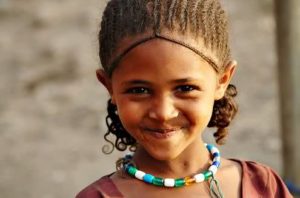 According to their traditions they trace their roots to Menelik I, the child born of the queen of Sheba and King Solomon. It is thought that the Sabaean (Sheban) people began to settle on the west coast of the Red Sea, from their home in southern Arabia, about 1000 BC. Menelik I was the first of the Solomonic line of rulers of Ethiopia that ended only with the deposing of Emperor Haile Selassie in 1974.
According to their traditions they trace their roots to Menelik I, the child born of the queen of Sheba and King Solomon. It is thought that the Sabaean (Sheban) people began to settle on the west coast of the Red Sea, from their home in southern Arabia, about 1000 BC. Menelik I was the first of the Solomonic line of rulers of Ethiopia that ended only with the deposing of Emperor Haile Selassie in 1974.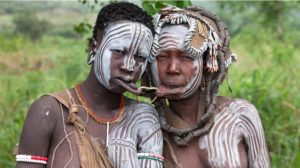 The Lower Omo is home to a remarkable mix of small, contrasting ethnic groups not only the Bume and Konso, but also the Gelebe, the Bodi, the Mursi, the Surma, the Arbore, and the Hamer, to name but a few. Lifestyles are as varied as the tribes themselves. Lacking any material, culture and artifacts common to other cultures, these tribes find unique ways in which to express their artistic impulses. Both the Surma and the Karo, for example, are experts at body painting, using clays and locally available vegetable pigments to trace fantastic patterns on each other’s faces, chests, arms, and legs. These designs are created purely for fun and aesthetic effect, each artist vying to outdo his fellows.
The Lower Omo is home to a remarkable mix of small, contrasting ethnic groups not only the Bume and Konso, but also the Gelebe, the Bodi, the Mursi, the Surma, the Arbore, and the Hamer, to name but a few. Lifestyles are as varied as the tribes themselves. Lacking any material, culture and artifacts common to other cultures, these tribes find unique ways in which to express their artistic impulses. Both the Surma and the Karo, for example, are experts at body painting, using clays and locally available vegetable pigments to trace fantastic patterns on each other’s faces, chests, arms, and legs. These designs are created purely for fun and aesthetic effect, each artist vying to outdo his fellows.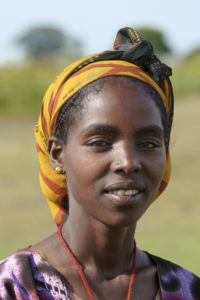 Like the Amharas, the gurage are a Semitic people who trace their origins to southern Arabia. For centuries, Gurageland’s economy has centered on the hoe civilization of Enset, a false banana plant. Not surprisingly, the gurage enjoy a reputation as Ethiopian’s hardest working people. They have lived in their highland villages for over 600 years, when their Semitic ancestors intermarried with Sidamo tribes. The Gurage maintained a tenuous relationship with the Emperors of Ethiopia – sometimes allies, sometimes enemies. Not till 1889 did the Ethiopian Emperor conquer the Gurage. They lived little better than serfs, required to.
Like the Amharas, the gurage are a Semitic people who trace their origins to southern Arabia. For centuries, Gurageland’s economy has centered on the hoe civilization of Enset, a false banana plant. Not surprisingly, the gurage enjoy a reputation as Ethiopian’s hardest working people. They have lived in their highland villages for over 600 years, when their Semitic ancestors intermarried with Sidamo tribes. The Gurage maintained a tenuous relationship with the Emperors of Ethiopia – sometimes allies, sometimes enemies. Not till 1889 did the Ethiopian Emperor conquer the Gurage. They lived little better than serfs, required to.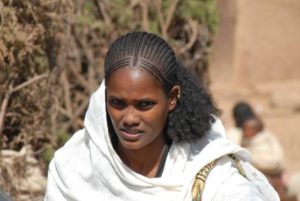 The women of Tigray wear dozens of plaits (shuruba) tightly braided to the head and fuzzing out at the shoulders. Young children often have their heads shaved, except for a tuft or a small tail of plaits, which are left so that if God calls them ‘He will have a handle by which to lift them up to Heaven’.
The women of Tigray wear dozens of plaits (shuruba) tightly braided to the head and fuzzing out at the shoulders. Young children often have their heads shaved, except for a tuft or a small tail of plaits, which are left so that if God calls them ‘He will have a handle by which to lift them up to Heaven’.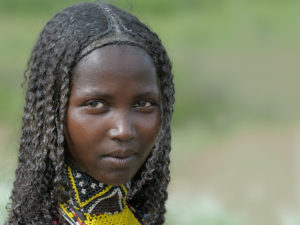
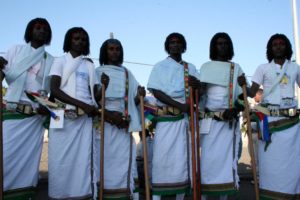 The Afar, most of whom occupy one of the most inhospitable desert or semi-desert areas in the world, have long been regarded as a fierce and warlike people. They are certainly proud and individualistic, and somehow manage to eke a living out of the challenging wilderness in which many of them live. The majority of the Afar are semi-nomadic pastoralists, but a minority have settled, notably those in the Aussa oasis. Almost all are Muslims, and are organized into confederacies, tribes, and clans. The nomads live in small, isolated groups with the camel as their beast of burden, and keep sheep, goats, and cattle.
The Afar, most of whom occupy one of the most inhospitable desert or semi-desert areas in the world, have long been regarded as a fierce and warlike people. They are certainly proud and individualistic, and somehow manage to eke a living out of the challenging wilderness in which many of them live. The majority of the Afar are semi-nomadic pastoralists, but a minority have settled, notably those in the Aussa oasis. Almost all are Muslims, and are organized into confederacies, tribes, and clans. The nomads live in small, isolated groups with the camel as their beast of burden, and keep sheep, goats, and cattle.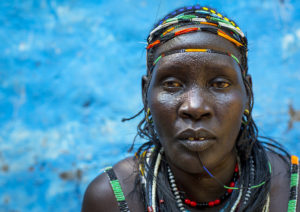 Anuak people are found in the Gambella region. The indigenous Anuak people are mainly fishermen in this region, and the crops they do grow such as: sorghum does not reach their full potential because of the extremely basic methods employed. There are few large villages, as people prefer instead to group together around a mango grove in the extended family compound of no more than five or six huts.
Anuak people are found in the Gambella region. The indigenous Anuak people are mainly fishermen in this region, and the crops they do grow such as: sorghum does not reach their full potential because of the extremely basic methods employed. There are few large villages, as people prefer instead to group together around a mango grove in the extended family compound of no more than five or six huts. Debra Damo monastery is situated on an isolated mountain in northern part of Tigray. It is unique compared with most Ethiopian monasteries. Debra Damo was built, in the sixth century AD, with curved wood panels, painted ceilings and walls dedicated to the legend of Saint (Abune) Aregawi. The history of Debra Damo is centred on the “Nine Saints” who came to Ethiopia from Syria to spread Christianity in the Tigray region. One of them was Saint
Debra Damo monastery is situated on an isolated mountain in northern part of Tigray. It is unique compared with most Ethiopian monasteries. Debra Damo was built, in the sixth century AD, with curved wood panels, painted ceilings and walls dedicated to the legend of Saint (Abune) Aregawi. The history of Debra Damo is centred on the “Nine Saints” who came to Ethiopia from Syria to spread Christianity in the Tigray region. One of them was Saint